#The Philadelphia Water Department
Explore tagged Tumblr posts
Text

The Philadelphia Water Department leaving work incomplete and abandoned
Several weeks ago, a work crew came to this area of Eastwick, performed some work, and left a fire hydrant lying in the street. The city or the responsible entity should address this unfinished work promptly. This incident exemplifies a concerning pattern of abandoned and incomplete work by city workers, which is unacceptable and requires immediate attention.
The address is: 8100 Mario Lanza Blvd
#eastwick philadelphia#philadelphia#philly311#eastwick community#southwest philly#the city of philadelphia#southwest philadelphia#philly 311#philly#philadelphia streets department#philadelphia water#fire hydrant leaking water#The Philadelphia Water Department
0 notes
Text
Things Biden and the Democrats did, this week #25
June 28-July 5 2024
The Department of Labor's Occupational Safety and Health Administration (OSHA). Is putting forward the first ever federal safety regulation to protect worker's from excessive heat in the workplace. As climate change has caused extreme heat events to become more common work place deaths have risen from an average of 32 heat related deaths between 1992 and 2019 to 43 in 2022. The rules if finalized would require employers to provide drinking water and cool break areas at 80 degrees and at 90 degrees have mandatory 15-minute breaks every two hours and be monitored for signs of heat illness. This would effect an estimated 36 million workers.
The Federal Emergency Management Agency announced $1 Billion for 656 projects across the country aimed at helping local communities combat climate change fueled disasters like flooding and extreme heat. Some of the projects include $50 Million to Philadelphia for a stormwater pump station and combating flooding, and a grant to build Shaded bus shelters in Washington, D.C.
The Department of Transportation announced thanks to efforts by the Biden Administration flight cancellations at the lowest they've been in a decade. At just 1.4% for the year so far. Transportation Secretary Pete Buttigieg credited the Department's new rules requiring automatic refunds for any cancellations or undue delays as driving the good numbers as well as the investment of $25 billion in airport infrastructure that was in the Bipartisan Infrastructure Law.
The Department of Transportation announced $600 million in the 3rd round of funding to reconnect communities. Many communities have been divided by highways and other Infrastructure projects over the years. Most often effecting racial minority and poor areas. The Biden Administration is dedicated to addressing these injustices and helping reconnect communities split for decades. This funding round will see Atlanta’s Southside Communities reconnected as well as a redesign for Birmingham’s Black Main Street, reconnecting a community split by Interstate 65 in the 1960s.
The Biden Administration approved its 9th offshore wind power project. About 9 miles off the coast of New Jersey the planned wind farm will generated 2,800 megawatts of electricity, enough to power almost a million homes with totally clear power. This will bring the total amount of clean wind power generated by projects approved by the Biden Administration to 13 gigawatts. The Administration's climate goal is to generate 30 gigawatts from wind.
The Biden Administration announced funding for 12 new Regional Technology and Innovation Hubs. The $504 million dollars will go to supporting tech hubs in, Colorado, Montana, Indiana, Illinois, Nevada, New York, New Hampshire, South Carolina, Florida, Ohio, Oklahoma, and Wisconsin. These tech hubs together with 31 already announced and funded will support high tech manufacturing jobs, as well as training for 21st century jobs for millions of American workers.
HHS announced over $200 million to support improved care for older Americans, particularly those with Alzheimer’s and related dementias. The money is focused on training primary care physicians, nurse practitioners, and other health care clinicians in best practices in elder and dementia care, as well as seeking to integrate geriatric training into primary care. It also will support ways that families and other non-medical care givers can be educated to give support to aging people.
HHS announced $176 million to help support the development of a mRNA-based pandemic influenza vaccine. As part of the government's efforts to be ready before the next major pandemic it funds and supports new vaccine's to try to predict the next major pandemic. Moderna is working on an mRNA vaccine, much like the Covid-19, vaccine focused on the H5 and H7 avian influenza viruses, which experts fear could spread to humans and cause a Covid like event.
788 notes
·
View notes
Text
The Philadelphia water department is studying how best to raise freshwater mussels. Why? So they can raise an absolute shit ton and put them in our rivers. Freshwater mussels are incredibly important for filtering excess nutrients and particulates from water. By deploying a million mussels a year the water department hopes to use these critters to improve our city’s water quality! Right now they raise about 10,000 mussels a year and hope to scale up to a million a year soon!
Edit: These are native species of mussels that belong here!
1K notes
·
View notes
Text
by Dion J. Pierre
Penn’s handing down disciplinary sanctions came nearly two months after it finally cleared protesters from school property with the help of the Philadelphia Police Department. The university had attempted to negotiate with the protesters, but its patience wore thin amid their escalating conduct. After hours of discussions failed to yield a settlement acceptable to both sides, interim president Larry Jameson publicly called the protesters a safety hazard while noting that they had committed acts of vandalism, including defacing a statute of Benjamin Franklin, one of the United States’ Founding Fathers, and “The Button,” a sculpture built in the early 1980s.
In addition to divestment from Israel, the demonstration’s leaders demanded that the university vacate a suspension of Penn Students Against the Occupation of Palestine, which the school shut down after multiple rules violations. Frustrated with the university’s refusing to grant them any concessions, masses of new people joined the encampment, expanding it over a larger area of school property and forcing the university to request additional security on campus.
“The protesters refused repeatedly to disband the encampment, to produce identification, to stop threatening, loud, and discriminatory speech and behavior, and to comply with instructions from Penn administrators and Public Safety,” Jameson said after the tents were dismantled. “Instead, they called for others to join them in escalating their disruptions and expanding their encampment, necessitating that we take action to protect the safety and rights of everyone in our community.”
Antisemitism fueled by anti-Zionism exploded at the university long before the “encampment” was set up, an action which was precipitated by Israel’s military response to Hamas’ massacre across southern Israel on Oct. 7. In September, it hosted “The Palestine Writes Literature Festival,” which included speakers such as Palestinian researcher Salman Abu Sitta, who once promoted antisemitic tropes, saying in an interview, “Jews were hated in Europe because they played a role in the destruction of the economy in some of the countries, so they would hate them.” Another controversial figure invited to the event was former Pink Floyd vocalist Roger Waters, whose long record of anti-Jewish snipes was the subject of a documentary released last year.
One day before the event took place, an unidentified male walked into the university’s Hillel building behind a staffer and shouted “F—k the Jews” and “Jesus Christ is king!” before overturning tables, podium stands, and chairs, according to students and school officials who spoke with The Algemeiner. Days earlier, just before the Jewish New Year of Rosh Hashanah, a swastika was graffitied in the basement of the university’s Stuart Weitzman School of Design.
21 notes
·
View notes
Text


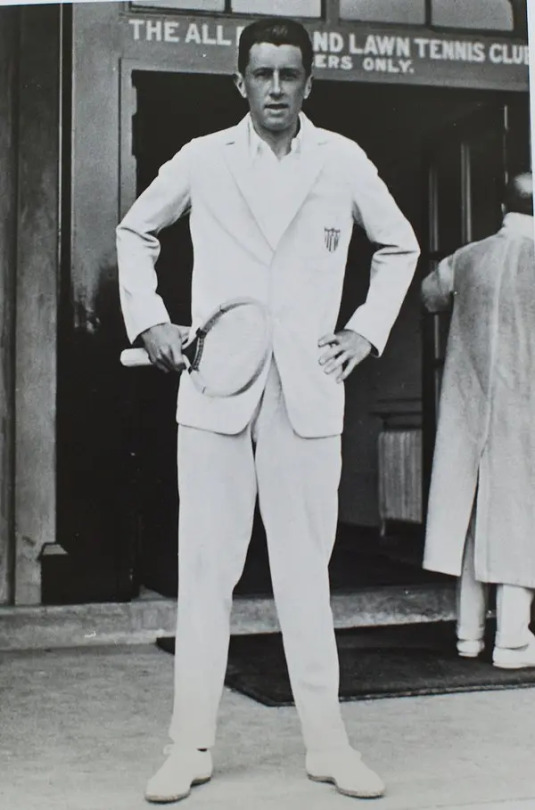
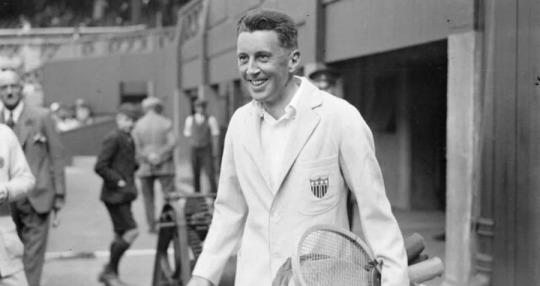
Today marks the 112th anniversary of the sinking of the Titanic.
Some of you know that I’m passionate about the RMS Titanic’s history but did you know that I really got into tennis because of one her passengers?
His name was Richard “Dick” Norris Williams, he was a tennis player and here his story:
Richard was born on January 29, 1891, in Geneva, Switzerland in a wealthy family from Philadelphia. He started playing tennis at a young age, and at only 12, he was Swiss junior champion. In 1911, at the age of 20, he won the Swiss Championship.
In 1912, he entered Harvard University as he wanted to continue playing tennis at a higher level. His life took a drastical turn when his father and him departed from Europe on the RMS TItanic. When the ship strucked an iceberg during her maiden voyage, Richard and his father escaped the sinking ship by jumping in the icy water of the Atlantic Ocean. Unfortunately, his father died that night - it is said that he was crushed by a funnel when it fell - but Richard survived by swimming to a partially submerged lifeboat, where he spent several hours knee-deep in the cold water. The passengers of the boat were later saved and brought on the RMS Carpathia. His legs suffered such severe frostbite during the ordeal that the doctor on the Carpathia considered amputation but Richard refused.
This choice was definitely the good one because after months of persistence and determination, he started playing tennis again and later that year, he won his first US Tennis Championship (now known as US Open) in mixed doubles, but also the US Men's Clay Court Championship (which takes place in Houston now). It was his first success but not the last ones. Between 1912 and 1914, he was ranked in the world's top 10 (even became top 2) and reached the US Tennis Championship final twice times in singles, managing to win one of them. After winning the US Tennis Championship a third time, his tennis career was stopped because of WWI. As a decorated soldier, he started playing tennis again in 1920 but as a doubles player. From there to 1927, he reached 7 more major finals, winning three of them, including Wimbledon and the US Tennis Championship twice. In the 1924 Olympics in Paris, he even won the golden medal in mixed doubles with a sprained ankle! He also was part of the US team at the David Cup during that time, was also very successful in there and even became captain. Finally, he retired at the age of 44, in 1935.
After a long career, he died on June 2, 1968, aged 77 from emphysema.
His story really touched me when I first read about him. I was maybe 12 or 13 years old, obsessed with the ship liner's history, I used to watch some Roland Garros matchs on TV at that time and I like to think that he's the one who really got me into that sport: i watched more matchs when I could, read about the sport in general, etc. Also, he was a true fighter on and off the court, he never gave up even when things seem impossible!
Anyway, for those who read that, I hope this small history in the big History pleased you.
And thank you, Dick! 🤍
23 notes
·
View notes
Text
Also preserved in our archive
Robert F. Kennedy Jr. from fringe figure to the prospective head of U.S. health policy was fueled by skepticism and distrust of the medical establishment—views that went viral in the Covid-19 pandemic.
People once dismissed for their disbelief in conventional medicine are now celebrating a new champion in Washington. Scientists, meanwhile, are trying to figure how they could have managed the pandemic without setting off a populist movement they say threatens longstanding public-health measures.
Lingering resentment over pandemic restrictions helped Kennedy and his “Make America Healthy Again” campaign draw people from the left and the right, voters who worried about the contamination of food, water and medicine. Many of them shared doubts about vaccines and felt their concerns were ignored by experts or regarded as ignorant.
Kennedy merged a crowd of Covid-era skeptics with people who long distrusted mainstream medicine and food conglomerates. Together, they helped return Donald Trump to the White House. With the president-elect’s selection of Kennedy to head the Department of Health and Human Services, the medical establishment is bracing for an overhaul of U.S. health policy.
Health authorities who beat the pandemic worry about losing more trust from the people they worked to save. Doctors, scientists and public-health officials are asking themselves how they can win it back. Among their postelection revelations: Don’t underestimate or talk down to those without a medical degree.
Officials fear that Kennedy will promote unproven remedies, appoint vaccine skeptics to immunization-advisory committees and hamper the government’s infectious-disease detectives in a future pandemic.
Kennedy has said he opposes food coloring and additives, the widely used pesticide glyphosate, seed oils and foods with added sugars, among many other issues. Medical authorities say some of his views, such as suspicion of ultra-processed foods, have scientific merit, while others are unfounded. The food and pharmaceutical industries are planning to win him over where they can and do battle where they can’t.
Much of Kennedy’s popularity reflects residual pandemic anger—over being told to stay at home or to wear masks; the extended closure of schools and businesses; and vaccine requirements to attend classes, board a plane or eat at a restaurant.
“We weren’t really considering the consequences in communities that were not New York City,” the places where the virus wasn’t hitting as hard, former National Institutes of Health Director Francis Collins said at event last year.
Authorities focused on ways to stop the disease and failed to consider “this actually, totally disrupts peoples’ lives, ruins the economy and has many kids kept out of school,” Collins said. The U.S. overall took the right approach, he said, but overlooking long-term consequences was “really unfortunate. That’s another mistake we made.”
Public-health officials wonder if they have sufficient clout for the next national emergency. “Science is losing its place as a source of truth,” said Dr. Paul Offit, an infectious-disease physician at Children’s Hospital of Philadelphia. “It’s becoming just another voice in the room.”
Pandemic restrictions wore on Joel Grey, a 62-year-old retired car salesman in Belfair, Wash., who voted for Trump. He got vaccinated only because diabetes put him at higher risk of complications from Covid-19. He said he watched acquaintances lose jobs because they wouldn’t get the shot and blamed his mother’s death at 87 partly on the isolation of lockdowns.
Grey became frustrated with scientists telling Americans how to live, he said: “I just don’t think they have a place in our lives.” His view resonated broadly.
In October 2023, 27% of Americans who responded to a Pew Research Center poll said they had little to no trust in scientists to act in the public’s best interests, up from 13% in January 2019.
‘Latest Nonsense’ Children’s Health Defense, a nonprofit group founded by Kennedy, got a boost during the lockdown era, a time of surging interest in alternative medical and nutrition information and advice. The nonprofit raised more than $46 million from 2020 to 2022, nearly 10 times more than it collected in the three years before the pandemic, tax filings show.
The group published articles saying Covid-19 vaccines sabotaged the immune system and enriched shareholders of drugmakers. “Ignore the Latest Nonsense About ‘Variants.’ Stay Focused on Dangers of COVID Shots,” read the headline of one 2021 article. Others took aim at Dr. Anthony Fauci, head of the federal government’s infectious-disease research center, and groups that supported vaccines, including the Bill & Melinda Gates Foundation.
To counter such views, Jessica Malaty Rivera, an epidemiologist with hundreds of thousands of Instagram followers, shared information on the importance of vaccines and face masks. She dismissed unsupported claims as misinformation and described some of their purveyors as grifters.
Looking back, Rivera said her sometimes scolding messages weren’t helpful. “Everybody has been tempted by the slam dunk,” he said. “It’s not an effective way to communicate science. It’s just not.” She and others say they are dialing back the use of the word misinformation, saying it makes people feel they are being called liars or dumb.
During the pandemic, Palmira Gerlach had questions about the Covid-19 vaccines, but doctors “were very dismissive,” the 44-year-old recalled.
Gerlach, a stay-at-home mother outside Pittsburgh, said she falsely told her child’s pediatrician that she got the shot, seeking to avoid judgment. The doctor told her, “Good girl.” Gerlach turned to podcasts featuring Kennedy, drawn to his willingness to question pandemic measures.
One challenge for health authorities was learning how to combat Covid-19 while hundreds of people died each day. Researchers needed months just to clarify how the virus spread. That meant answers to common questions kept shifting: Was it OK to gather outside? When was it safe to visit grandparents? Do I have to wear a face mask everywhere?
Health authorities sometimes got it wrong. At first, officials said Covid-19 vaccines would prevent transmission or infection. Later, they learned that the shots instead cut the risk for hospitalization or death.
Shelli Hopsecger, a small-business owner in Olympia, Wash., who described herself as an independent, said she listened closely to health officials when the pandemic hit. But as school closures and lockdowns dragged on, she began questioning what they said.
Hopsecger, 56, said the pandemic made her realize how powerful a role federal health agencies played in her life. “We all are aware now that there are these agencies that look at these things on our behalf,” she said. “As citizens, it’s time for us to start telling them what we want them to look at.”
Last year, Hopsecger said she started listening to Kennedy’s podcast interviews on the recommendation of her 26-year-old son. She recalled Kennedy pointing out how millions of Americans suffer from chronic diseases, despite vast sums spent on healthcare.
“Mr. Kennedy is definitely on to something,” Hopsecger said. “Our current policies and systems are not doing the job of preventing or even reversing chronic diseases.”
Us and them Kennedy’s polling as an independent presidential candidate had fallen to the single digits when he threw his support to Trump in August and embraced the slogan “Make America Healthy Again.”
The career of Kennedy—an environmental lawyer, former heroin addict and the nephew of the late President John F. Kennedy—took a turn in 2005 when he began questioning the use of vaccines. He says he exercises, meditates and attends 12-step meetings every day.
While campaigning for Trump, Kennedy talked about how more Americans were obese and more young people were getting diagnosed with cancer. He decried the quality of foods and warned that water and medicines were polluted by toxins and chemicals. He criticized the medical establishment for pushing pills and shots, rather than addressing the root causes of disease.
“We were all told in Covid: ‘Trust the experts.’ But that’s not a thing,” Kennedy said in an episode of the “What is Money?” podcast in April. “Trusting the experts is not a feature of science. It’s the opposite of science. It’s not a feature of democracy.”
Many doctors, scientists and health officials with traditional credentials share Kennedy’s view that ultraprocessed foods contribute to obesity, yet they also say more study is needed. Likewise, many establishment health figures agree that scientists need to do more to understand the role of microplastics and so-called forever chemicals in food and water.
Yet many scientists and food-industry officials say some of the food colorings and chemicals Kennedy pinpoints as dangerous don’t affect human health in such small quantities. Nearly all are alarmed by Kennedy’s unproven or disproved claims—that vaccines cause autism, AIDS might not be caused by HIV and antidepressant drugs might be linked to mass shootings.
Ashley Taylor, a 33-year-old entrepreneur in New York City, sides with Kennedy’s views on food safety and the role of experts. She became critical of traditional medicine after scoliosis surgery as a teenager left her reeling in pain and reliant on Tylenol. She said she rejected her doctors’ recommendations and found relief from her back problems with acupuncture, a nutritious diet, yoga and positive thinking.
Taylor said that health authorities during the pandemic ignored studies on natural immunity and didn’t acknowledge that people who had been infected with Covid-19 might not need to be vaccinated. “What I just don’t approve of is purposefully presenting information in a way that is not allowing the American public to arrive at their own opinion,” she said.
Taylor listened to part of Kennedy’s book, “The Real Anthony Fauci; Bill Gates, Big Pharma, and the Global War on Democracy and Public Health.” She was attracted to his ideas even more after watching a September roundtable on nutrition featuring Kennedy and his allies, hosted by Sen. Ron Johnson (R, Wisc.) in the Senate.
After previously voting for Democrats, Taylor said she cast her ballot for Trump.
Mainstream doctors, researchers and health officials are bracing for a Kennedy-led federal health department. They are considering how best to communicate with the public if they need to counter decisions that stray from established public-health measures.
Some Food and Drug Administration staffers have already stopped saying that vaccines are safe and effective, instead advising that the benefits outweigh the risks, a person familiar with the matter said. The change is intended to make clear that all medical interventions have risks, the person said, and to spike the argument that rare side effects mean vaccines aren’t safe.
Virologist Dr. Greg Poland said he advises scientists to communicate with humility and empathy, to speak as a compassionate physician would with a patient. “We’re not dogmatic. We’re not about forcing people,” he said. “We’re about imparting information.”
To build trust in vaccines, Poland, who is also a Presbyterian minister, speaks to conservative churches and civic groups. He tells them he will be truthful and transparent and then explains how vaccines work and how scientists arrive at a consensus.
Poland said he stays until he has answered every last question.
#mask up#public health#wear a mask#pandemic#covid#wear a respirator#covid 19#still coviding#coronavirus#sars cov 2#us politics
8 notes
·
View notes
Text
It’s a new political era, and the pharmaceutical industry is beside itself with worry.
Related: RFK Jr. Threatens War on FDA in Epic Tweet
Via Science.org (emphasis added):
“Concerns about what a second Donald Trump (R) presidency could mean for public health and biomedical research ratcheted up this week after Robert F. Kennedy Jr. told supporters Trump has promised to give him “control” over agencies at the Department of Health and Human Services (HHS), including the Food and Drug Administration (FDA) and the National Institutes of Health (NIH)…
Public health researchers are alarmed, especially given Kennedy’s opposition to vaccines. “I can’t imagine anyone who would be more damaging to vaccines and the use of vaccines than RFK,” University of Minnesota epidemiologist Michael Osterholm told CNN…
Kennedy appears to be poised to wield substantial influence should Trump win. Trump has embraced Kennedy’s “Make America Healthy Again” agenda, which calls for removing allegedly harmful chemicals in foods and water and cracking down on ultraprocessed food, among other steps…
Numerous critics of Kennedy have weighed in with concerns. Children’s Hospital of Philadelphia vaccine expert Paul Offit told CNN Kennedy is a “science denialist.” Even Jerome Adams, who was surgeon general during Trump’s presidency, said at a meeting this week that if Kennedy discourages people from getting vaccines, “I am worried about the impact that could have on our nation’s health,” economy, and security.”
When RFK Jr. recently got interviewed by a hostile propagandist at CNN, he was asked what he would do to clean up the public health rot:
“The nutrition department of the FDA has to go. They’re not doing their job. They’re not protecting our kids. Why do we have Froot Loops in this country that have 18 or 19 ingredients, and you go to Canada and it’s got two or three?
I can get the corruption out of the agencies, that’s what I’ve been doing for 40 years. I’ve sued all those agencies, I have a PhD in corporate corruption, that’s what I do. And once they’re not corrupt, once Americans are getting good science and are allowed to make their own choices, they’re going to get a lot healthier.”
Related: Did Populist Rage at Big Pharma Fuel Trump Victory? Election Data Indicates Maybe
Meanwhile, a prominent RFK advisor recently revealed some inside baseball, that no fewer than five pharma capos have convened an “emergency teleconference” to try to strategize about how to combat RFK Jr.’s promised reforms.
3 notes
·
View notes
Text

Drought Expands Across the U.S.
Unusually dry conditions gripped over half the contiguous United States in October 2024. On October 29, abnormal dryness and drought affected over 78 percent of the American population—the highest percentage in the U.S. Drought Monitor’s 25-year-long record.
Drier- and warmer-than-normal weather dominated the country during much of October, caused by a strong ridge of high pressure that lingered high in the atmosphere for weeks. According to the Southeast Regional Climate Center, 100 weather stations across the U.S. recorded no rain in October, including the cities of Philadelphia, Atlanta, Birmingham, Dallas, Las Vegas, and Sacramento. Over 70 weather stations recorded the driest October on record.
The map above shows conditions in the contiguous U.S. on October 29, 2024, as reported by the U.S. Drought Monitor, a partnership of the U.S. Department of Agriculture, NOAA, and the University of Nebraska-Lincoln. The map depicts drought intensity in progressive shades of yellow to red. It is based on an analysis of climate, soil, crop, and water condition measurements from more than 350 federal, state, and local observers around the country. NASA contributes several measurements and models that aid the drought monitoring effort.
Drought had expanded from covering just 12 percent of the country in June to 54 percent as of October 29. The rapid development created what NOAA describes as a “flash drought” in many parts of the country. Flash droughts are typically brought on by lower-than-normal rates of precipitation, accompanied by abnormally high temperatures, wind, or radiation.
“Although droughts usually develop slowly over the course of months and years, a flash drought rapidly intensifies over the course of a few weeks to a couple of months,” said Caily Schwartz, a scientist at the Global Water Security Center at the University of Alabama. Schwartz noted that in Nebraska, where the National Drought Mitigation Center is located, there has been little rain and higher-than-normal temperatures in October. Much of the state was in severe drought (represented as orange in the map) in late October.
Almost the entire country was warmer than normal the week of October 23-29, and drought was present in every state except Alaska and Kentucky. The High Plains and South were the warmest regions, with temperatures 10 to 12 degrees Fahrenheit (6 to 7 degrees Celsius) above normal.
Even in the Southeast where Hurricane Helene dropped significant precipitation in late September, many places dried out rapidly, with some recording zero precipitation since the hurricane.
“This fall has been a prime example of flash drought across parts of the U.S.,” said Jason Otkin, a meteorologist at the University of Wisconsin-Madison. “These events can take people by surprise because you can quickly go from being drought-free to having severe drought conditions.”
Otkin co-authored research published in Science that showed that droughts have intensified more rapidly since the 1950s due to human-caused climate change. According to the research team, flash droughts have become more common over much of the world, making drought monitoring and forecasting more difficult.
NASA Earth Observatory image by Michala Garrison, using data from the United States Drought Monitor at the University of Nebraska-Lincoln. Story by Emily Cassidy.
2 notes
·
View notes
Text
Last September, while working at his desk in Philadelphia, Samuel R. Delany experienced a mysterious episode that he calls “the big drop.” His vision faded for about three minutes, and he felt his body plunge, as if the floor had fallen away. When he came to, everything looked different, though he couldn’t say exactly how. Delany, who is eighty-one, began to suspect that he’d suffered a mini-stroke. His daughter, Iva, an emergency-room physician, persuaded him to go to the hospital, but the MRI scans were inconclusive. The only evidence of a neurological event was a test result indicating that he had lost fifteen per cent of his capacity to form new memories—and a realization, in the following weeks, that he was unable to finish his novel in progress, “This Short Day of Frost and Sun.” After publishing more than forty books in half a century, the interruption was, he told me, both “a loss and a relief.”
For years, Delany has begun most days at four o’clock in the morning with a ritual. First, he spells out the name Dennis, for Dennis Rickett, his life partner. Next, he recites an atheist’s prayer, hailing faraway celestial bodies with a litany inspired by the seventeenth-century philosopher Baruch Spinoza: “Natura Naturans, system of systems, system of fields, Kuiper belt, scattered disk, Oort cloud, thank you for dropping me here.” Finally, he prepares oatmeal, which he faithfully photographs for the friends and fans who follow him on Facebook. Every so often, when the milk foams, he sees Laniakea—the galactic supercluster that’s home to Earth.
In the stellar neighborhood of American letters, there have been few minds as generous, transgressive, and polymathically brilliant as Samuel Delany’s. Many know him as the country’s first prominent Black author of science fiction, who transformed the field with richly textured, cerebral novels like “Babel-17” (1966) and “Dhalgren” (1975). Others know the revolutionary chronicler of gay life, whose autobiography, “The Motion of Light in Water” (1988), stands as an essential document of pre-Stonewall New York. Still others know the professor, the pornographer, or the prolific essayist whose purview extends from cyborg feminism to Biblical philology.
There are so many Delanys that it’s difficult to take the full measure of his influence. Reading him was formative for Junot Díaz and William Gibson; Octavia Butler was, briefly, his student in a writing workshop. Jeremy O. Harris included Delany as a character in his play “Black Exhibition,” while Neil Gaiman, who is adapting Delany’s classic space adventure “Nova” (1968) as a series for Amazon, credits him with building a critical foundation not only for science fiction but also for comics and other “paraliterary” genres.
Friends call him Chip, a nickname he gave himself at summer camp, in the eleventh year of a life that has defied convention and prejudice. He is a sci-fi child prodigy who never flamed out; a genre best-seller widely recognized as a great literary stylist; a dysgraphic college dropout who once headed the Department of Comparative Literature at the University of Massachusetts, Amherst; and an outspokenly promiscuous gay man who survived the aids crisis and has found love, three times, in committed, non-monogamous relationships. A story like Delany’s isn’t supposed to be possible in our society—and that, nearly as much as the gift of his writing, is his glory.
It took several months to persuade him to meet. Delany has polemicized against the face-to-face interview, reasoning that writers, who constitute themselves on the page, ought to be questioned there, too. He warned in an e-mail that a visit would be a waste of time, offering instead a tour of his “three-room hovel” via Zoom: “No secret pile will be left unexplored.” Yet a central theme in his work is “contact,” a word he uses to convey all the potential in chance encounters between human beings. “I propose that in a democratic city it is imperative that we speak to strangers, live next to them, and learn how to relate to them on many levels, from the political to the sexual,” he wrote in “Times Square Red, Times Square Blue” (1999), a landmark critique of gentrification which centered on his years of cruising in the adult theatres of midtown Manhattan.
His novels, too, turn on the serendipity of urban life, adopting the “marxian” credo that fiction is most vital when classes mix. Gorgik, a revolutionary leader in Delany’s four-volume “Return to Nevèrÿon” series, rises from slavery to the royal court in an ancient port city called Kolhari, where he learns that seemingly centralized “power—the great power that shattered lives and twisted the course of the nation—was like a fog over a meadow at evening. From any distance, it seemed to have a shape, a substance, a color, an edge. Yet, as you approached it, it seemed to recede before you.”
In January, Delany finally allowed me to visit him at the apartment complex that he now rarely leaves. A hulking beige structure near the Philadelphia Museum of Art, it looms like a fortress over the row houses of the Fairmount. I crossed a lobby the length of a ballroom and rode the elevator to the fourth floor. As I walked down the hallway, I noticed a small man behind a luggage trolley taking my picture. It was Delany, smiling in welcome with his lively brown eyes and strikingly misaligned front teeth.
[A Delightful portrait of my favorite Science Fiction writer]
24 notes
·
View notes
Text
Here Are 17 Uncommon Curiosities Reportedly Found In The Ohio River
The Queen City, as Henry Wadsworth Longfellow famously wrote, sits “in her garlands dressed, on the banks of the Beautiful River.” Once claimed by the French and named by them exactly that: La Belle Riviere, the Ohio has been the soul and foundation of our city ever since the first houses went up, but our Beautiful River has also proved to be a weird and moody companion, coughing up a bizarre miscellany from time to time.
Alligators In 1879, Dr. A. Jackson Howe procured a live, three-foot long alligator for display at the museum of the Cincinnati Society of Natural History. The reptile had been captured on the Covington shore, while several others were spotted frolicking in the Ohio River among some empty coal barges. Three years later, John Thornton found an alligator sleeping beneath the floorboards of his Newport icehouse. Charles Pitts of Covington lassoed a three-and-a-half-foot alligator from the Ohio River at the foot of Covington’s Main Street in 1870.
Bodies, Lots Of Bodies Almost from the time Cincinnati was first settled bodies have been recovered from the Ohio River including suicides, victims of foul play and accidental drownings. Among the earliest casualties was Francis Kennedy, who operated the first ferry between Cincinnati and Northern Kentucky and who drowned while hauling beef cattle to Fort Washington. Over the years, the old newspapers printed hundreds of inquest reports, often directed toward ascertaining the identities of bodies found overnight.
Catfish Of Unusual Size The Cincinnati Commercial Tribune of 3 February 1849 reports that Frederick Diserens, proprietor of the William Tell restaurant, and Colonel Josiah J. Stratton of the Fire Department, had shipped a “mammoth cat fish” to the Exchange Hotel in Philadelphia. The leviathan, caught in the Ohio River at Cincinnati, measured five feet, ten inches in length and tipped the scales at 158 pounds. Prior to its shipment east, the beast hung outside Diserens’ establishment on the south side of what is now Government Square. In 2009, two fishermen landed a blue catfish measuring four feet, six inches long and weighing 96 pounds within view of downtown Cincinnati.
Chemical “Slug” The Ohio River, lined with heavily fertilized farmland and a multitude of manufacturing plants, is regularly listed as among the most polluted streams in America. Residents of a certain age will recall the great carbon tetrachloride “slug” of 1977. When a tank full of toxic “carbon tet” ruptured at the FMC Corporation facility in February of that year, it released 5000 to 6000 pounds into the Ohio River as a 50- to 60-mile “slug” of highly polluted liquid. Water purification systems up and down the river shut off intake valves until the “slug” passed.
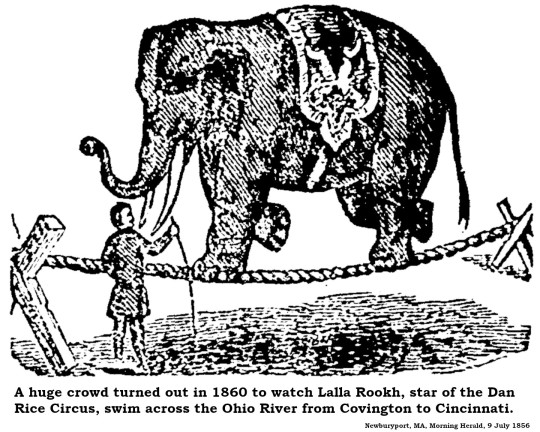
Elephant Bathing All of Cincinnati – and Covington, too – turned out on the morning of 9 August 1860 to watch an elephant swim across the Ohio River. The elephant was Lalla Rookh, star of the Dan Rice Circus. Lalla Rookh had been, for the past decade, a highlight of Dan Rice's big-top extravaganzas. Billed as the “Pachyderm Princess,” she was famous for her tightrope act and she also danced, rang bells and fired a pistol. She was a huge draw and, according to the Cincinnati Enquirer, brought out a good crowd for her river bath, estimated between 15,000 and 20,000
Ghosts No one ever solved the 1890 murder of Billy Fee, who was knifed and shot on the banks of the Ohio River near Lawrenceburg. Almost a year later a young man traveling by boat up the river past the murder scene cried out that he could see shadows on the darkened waters vividly recreating the murder scene. For years, residents of Lawrenceburg venturing near the river at night reported visions of the dreadful crime, accompanied by the sounds of shrieks and gunshots.
Giant Snakes On 11 August 1849, a Clermont County “man of respectability” named John Wait swore to an affidavit in which he claimed to have seen a snake more than 30 feet in length on the banks of Hartman’s mill pond. A posse was assembled and searched all over for the beast with no results, even after draining the mill pond. Sightings, however, continued for the next decade. In 1858, the Cincinnati Commercial Tribune reported that the dam at Hartman’s mill had been badly damaged by a flood and the snake was assumed to have escaped toward the Ohio River. According to a 1940 article in the Cincinnati Post, the Cincinnati Zoo offered to help citizens near Gallipolis locate a snake estimated at 35 feet in length. Coincidence?
Green Clawed Beast It was a sultry afternoon on 14 August 1955 when Naomi Johnson and some friends headed to the Ohio River at Evansville for a refreshing dip. While swimming just 15 feet offshore, something swam up behind Mrs. Johnson and grabbed her leg. She felt claws scratch her leg as the thing pulled her under the water. She began kicking her assailant and was pulled under a second time before her friends lifted her out of the river. Her left leg was extensively lacerated and bruised, with one mark distinctly hand-shaped. Mrs. Johnson claimed to have seen a UFO just before she was attacked, and there were several UFO sightings in the Evansville area around the time of the incident, leading her to believe an extraterrestrial origin for her attacker.
Kentucky Border For most of our region’s history, the entire Ohio River belonged exclusively to Kentucky. That all changed on 21 January 1980, when the United States Supreme Court fixed the border between Ohio and Kentucky at the low-water mark of the river in 1792. With two centuries of dam construction and other navigational improvements, the Ohio River is significantly deeper and wider than it was in the 1790s. The border is now, in some cases, hundreds of feet off the Ohio shore.
Madonna’s Yacht Rusting away in an Ohio River tributary just 25 miles downriver from Cincinnati is a 186-foot yacht originally known as the Celt but probably most famous as the USS Sachem among a variety of names acquired over its 120-year history. Thomas Edison used it for anti-submarine research. It ran out of New York as a recreational fishing vessel and served as a coastal patrol ship during World War II. After the war it hauled tourists around Manhattan. Robert Miller of Finneytown bought the yacht for $7500 in the 1980s and rented it out to Madonna, who filmed part of her “Papa Don’t Preach” video onboard. Miller hauled it upriver to its current resting place shortly after sailing a boatload of friends around the rededication of the Statue of Liberty in 1986.
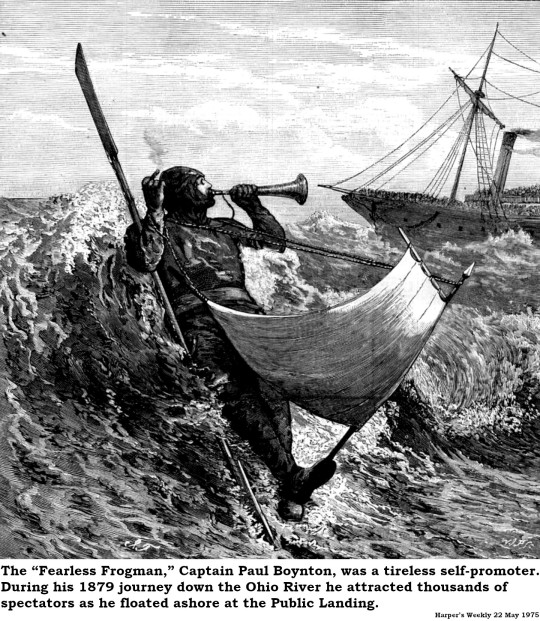
Man Afloat On 11 March 1879, a crowd of fifteen thousand swarmed the riverfront to catch a glimpse of the “Fearless Frogman,” Captain Paul Boynton, as he arrived in Cincinnati while floating from Pittsburgh to Cairo in a buoyant rubber suit. Outfitted with sails and oars, Boynton’s “peculiar life-saving dress” allowed him to maintain speeds of five or six miles per hour on his downriver odyssey. That night, he attended a performance at the Grand Opera House on Vine Street and, being recognized, was called to the stage and compelled to give a speech.
Mud Mermaids The Cincinnati Enquirer of 6 September 1894 reported two “nondescript creatures, horrible in appearance and strange in habits” at a sand bar in the Ohio River near Vevay, Indiana. The creatures appeared to be carnivorous, dining on fish and mussels plucked from the river. They were described as being yellowish in color, about five feet long, with webbed and clawed hands and feet. Their hairless heads had sharply pointed ears standing straight up. In the years since, the Vevay beings have been dubbed “Mud Mermaids.”
Octoman Police dispatchers along both sides of the Ohio River were swamped with frantic calls from late January to early February 1959 as dozens of residents and travelers reported strange creatures emerging from the depths. Sightings were recorded from New Richmond to the Licking River bridge. One witness compared the critter to an octopus while others said it looked like an immense human, leading to the nickname Octoman. Panic spread, with one 11-year-old boy calling the Cincinnati Post to confirm his teacher’s story that green men were clambering out of the river in platoons of twelve. To add to the mystery, all the streetlights along Kellogg Avenue from Lunken Airport to Coney Island extinguished as the first reports came in. After a week, sightings abated and Octoman seemingly disappeared.
Petroglyphs Just as the Ohio River slips across the state line from Pennsylvania, at the junction with Little Beaver Creek at East Liverpool, it covers a vast array of submerged designs carved into the rock. First recognized by French explorers in 1755, the display has been largely immersed in a much deeper river, only occasionally emerging into visibility in times of extreme drought. Hundreds of these Native American carvings were found for about 10 miles along the Ohio River from Midland, Pennsylvania through Wellsville, Ohio. The origin or date of the petroglyphs remains unknown and will likely never be determined.
Sea Lion In May 1962 several people reported a strange beast frolicking in the Ohio River near the Fernbank locks. The animal was not large; maybe three feet in length, but it was unlike anything naturally associated with the wildlife of the area. An expedition organized by the Cincinnati Zoo discovered that the mysterious visitor was a sea lion named “Playful George” that had escaped from a menagerie in Huntington, West Virginia and made its way nearly 200 miles downriver to the Markland Dam. George was captured and quarantined at the Zoo before returning home.
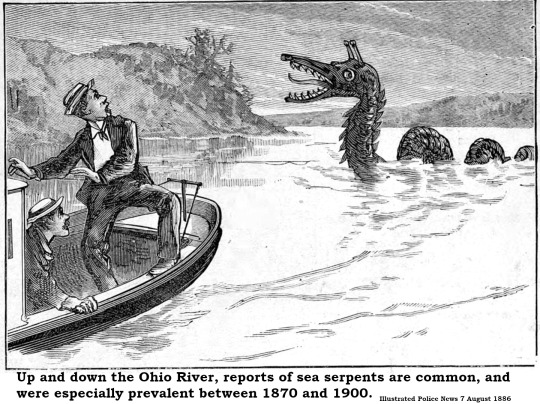
Sea Serpents In the dim, pre-dawn light of Friday, 11 January 1878, Ben Karrick was driving his horse-drawn delivery wagon over the Roebling Suspension Bridge when he saw a most unusual sight in the Ohio River below – a sea serpent. He told the Cincinnati Gazette that the creature’s serpentine head protruded from the water some twelve or fifteen feet and it lashed the water into foam with its tail. Karrick told the newspaper that the beast made a noise similar to the deep lowing of a cow, interspersed with a loud hissing noise. A day previously, John Davidson, master of the Silver Moon steamboat, saw a nearly identical monster while docked at Vevay, Indiana. In July 1893, pleasure boaters near Blennerhassett Island saw “a monstrous submarine animal or serpent, with an immense head and staring, bulbous eyes” gliding alongside their boat. The witnesses estimated the critter at more than 10 feet in length.
Underwater Pedestrian Newspapers around the nation carried the news in July 1878 that Captain John T. Guire, identified as “the celebrated submarine diver,” had entered into a wager that he would walk from Cincinnati to Cairo on the bottom of the Ohio River. Guire’s previous exploits in the Mississippi River at Saint Louis were cited as proof of his skill and determination. Although it was noted that Guire engaged in practice strolls near Cincinnati, it does not appear that the 500-mile underwater hike to Cairo ever materialized.
23 notes
·
View notes
Text
BAD COPS, GOOD CRIMINALS, AND SOMETHING IN-BETWEEN: A BACKGROUND DRABBLE, DEPICTING THE EVENTS PREVIOUS TO MARI'S DESCENT TO BEING ON THE RUN. CANON CREATED IN AFFILIATION WITH @TOCOOK, @METHEMPIRE, AND @GUSTAVOS. CONTENT WARNINGS ARE AS FOLLOWS— ABUSE MENTIONS, C-PTSD SYMPTOMS, ADDICTION / DRUG USE, ABUSE OF POWER, MURDER / DEATH, VIOLENCE, MANIPULATION.
in 2001, philadelphia police department send their best and brightest (otherwise known as the individuals with more bendable moral codes) to the door of state judge kenji dai’s home. with a notepad in hand, and a crooked jaw set straight, mike ehrmantraut presses a little further into a domestic dispute call than what self preservation tells him to. work with me, kid, he murmurs beneath a tired tone and a sidestepped gaze from the nearby father. give me something to go off of, he pushes, but sixteen year old mari dai is watching her hands unfold and refold in her lap, shrugging her shoulders inward, and telling him there isn’t anything to give. there’s nothing to talk about, she mutters, and traces the side of her sock onto the hardwood flooring. thanks for checking in, is what her father says as they leave, wrapping his grasp around the edge of the front door, but mike’s stare never strays off the beaten path in the slightest, watching carefully as the white-clad teenager in question peeks her way out from the closed curtains — and then abruptly disappears.
several days later, in the closed-blinded office of philadelphia’s police department, mike ehrmantraut is biting out the words something is going on in that house. a sigh circulates in return, giving empty advice that neither officer of the law believes to amount to anything: you wanna make an accusation, mike — you go right ahead. can’t stop you. but you and i both know how this goes. the silence sits between the two, and a bitter-breathed exhale works in tandem with an exit, leading his patrol car right down the street mike had driven down only a few days previous. the crackle of gravel aligns with his window rolling downward, pace slowing to creep in an approach to the driveway that now has carved itself empty: with the exception of one. a frown digs into the side of his cheek, watching as a distant form collects little shards of what he can only assume to be the remains of a bottle, tucking them into a crinkled plastic bag, and looking over her shoulder every few seconds. any slow pace has lulled to a stop, brakes creaking and meeting the gaze of a blank-faced sixteen year old. what do you want, she spits from across the yard, all heat and no quiet hesitation, and it’s almost enough to make him chuckle. instead, he raises his eyebrows just the slightest, and tells her he’s just doing his rounds. i’m checking in, is what he means, and they both know it. she stares at him for a moment longer, picks up a final shard of glass to fold inside of her palm briefly, and tells him there’s probably something more important going on elsewhere. he pauses, the faint rustle of windchimes ringing in the distance, and says simply: no, i don’t think there is.
only a year later does word circulate about matt ehrmantraut’s death, with mari’s close ear to the ground hearing murmurs and whispers on how stand-up cop mike ehrmantraut is drowning in grief. at dinnertime, her finger traces along the warped edge of her desk, sheltered into her room, and pries out a fake i.d from the box hidden in the very back of her closet. silent steps carry her out of her front door, catching the nearest bus and working her way into a bar that surrounds her in the hustle and bustle of a world she only finds a brief reprieve in. the taste of a watered down whiskey hits the back of her throat, spinning the glass in her palm as she watches the in’s and out’s of a dive bar that find it just not worth their time to argue with her by now. she’s got an answer for everything, they’re not paid enough to care, and her fake i.d is passable enough to get her in the door. what more do they need? ignorance in the face of the law isn’t breaking the law — it’s just ignorance. plausible deniability, and no one in this town gives enough of a shit to figure out anything otherwise.
living vicariously through the chatter in bars has been enough to know a little more about the cop who wouldn’t stop making his rounds in mari’s neighborhood, and once the non-concealable scar came with no return from her and only a glimpse of her gaze through the drawn-curtained window, any brief conversations held dwindled down to nothing. her choices are limited, his options were none, and trying to find an out through a law that abides by nothing but dollar signs and false hierarchies isn’t a dream that mari has ever invested into. but sometimes, she likes to hear about him. sometimes, she likes to think of the things she could say. it’s only on the chances of picking just the right dive bar at just the right time that makes those hushed whispers into something more of a reality — a gruff voice familiarizing itself at the end of the bar. her back molar outlines the inside of her cheek, still fresh with a nervous-found wound, before impulse overrides any logic.
people say drinking alone is dangerous, is what she tosses out into the air as she hops onto a nearby barstool. mike’s voice rumbles, not quite as humorous as it is dry, letting her know that he’s heard something similar about teen drinking. a smirk twitches at the corner of her lip, an empty glass nudged his way, with her stare fixating on a nearby bartender briefly. a fluid defense of it not looking like she’s got anything left to drink contrasts with a slow introduction to truth, hindered only by a pause before mari’s voice drops to a low murmur. she says thanks — any reasonings going unsaid, with quiet implications and silent understandings knitting themselves underneath. another pause stretches outward, with her finger tracing over the edge of the bar and a swallow of mike’s drink working itself between his lips. the clock ticks onward, a repetitive touch circling itself over a worn surface, before she tacks on one additional word after: sorry. it breathes itself hesitant, as if not quite sure what to apologize for, and the gentle clink of mike’s glass returns to the space in front of him.
something close to a bittered wane wedges itself into his voice, boomeranging the sentiment right back to her. me too. the statement is simple, as plain as hers is, and neither need more of a heart-to-heart to pinpoint just where it hurts. mari’s gaze watches as the remainder of his drink dissipates, leaving nothing but a hollow-shell and a bar napkin stuck beneath it. as the minutes waste themselves away, and the last drops of liquor swipe themselves clean, mike heaves out a sigh, and tugs a pen from his jacket pocket. i’m moving on, he states, all gruff and factual with only a scribble of numbers to spare. he stands, the napkin nudging against her palm, as a stare levels out to her. look after yourself, kid, he advices, and gestures to the dim surroundings of the bar. you won’t find anything good in places like this.
the calls come in small increments. how are you holding up, keep an eye on your mother, and is that boyfriend of yours behaving himself all stack into five minute phone calls that span out over the years. she tells him things in return — like she’s holding up just fine, her mother should learn how to take care of herself, and her boyfriend never behaves himself so mike should give up on that dream. sometimes she’ll get a brief chuckle through the phone, sometimes she can hear a distant huff of disapproval, and sometimes it’s a silence that says everything she needs to know. it’s nothing special, but it’s a secret that keeps itself contained to just the bare essentials. mike doesn’t need to know anything more than what she tells him, but his stand-up citizen routine doesn’t fool her. he left the very day after two cops dropped dead, and she doesn’t need to hear the shots ring out to know who the hell pulled the trigger. it’s why she keeps calling, she thinks. part of why she keeps calling, at least, because there’s some pieces of her past she doesn’t know how to let go of, and that younger year, sort-of-tipsy self being given ten digits towards a lifeline isn’t something she takes lightly.
so much so, that when her apartment space clears and her life bumps down to a population count of one, there’s no hesitation in packing her bags and sob-storying her way into a one way plane ticket to new mexico. mari needs a clean slate, mike found his in that city 5 years ago, and albuquerque welcomes her in with a straight faced mike ehrmantraut running his hand over his face as she dials his number for a couch to crash on. three days and some subtle amounts of digging later, he tells her two weeks, as she changes the channel for the 10th time in their conversation. and no visitors, he adds, with just a little less patience than before. her tongue clicks against her cheek, humming as she presses a button on the remote again, and tosses out a comment that runs any last patience downward. why, you got something to hide? her shit-eating smirk meets his unamused disapproval, and any formal barriers shred themselves shy. nothing you haven’t already tried to find, he responds, and unsaid understandings birth anew. mari’s laugh echoes through the room, telling him she’s glad his skills aren’t slipping in his old age. he shakes his head, and only pauses in his step as she follows up with a piece of advice: you might want to consider some other hiding spots, though. mari clicks through a channel, flashes her pearly whites in a grin, and finishes any last wipe-aways of lies with a taunt — your collection of suppressors is pretty tempting for a girl like me.
mike could tell himself that he gets her in the door with gustavo fring for the sake of his couch being free again, but he doesn’t. the world is a rat-race of whoever bears their teeth the sharpest, and mari may have proved she’s a sharp-shooter and a clean-criminal, but he still remembers the days before her left eye had a permanent reminder on why she became that way. she’s older, wiser, but not as old and wise as he is, and he knows there’s something beneath all those laugh-tracked smirks and casual callousness. he’s got too many memories of her looking over her shoulder to focus entirely on the days that she doesn’t. or, seemingly doesn’t, because their weekly diner chats and early morning pop-ups seem to be the only thing that she keeps around in her life. she does her job well, she’s more than equipped for her line of work, but he’s been around the block enough times to know that padlocking the world shut comes at a cost. mike may roll his eyes as she dumps 10 packets of sugar and too many cups of creamer into her 6am coffee, but if he chooses to stand outside while she burns down a cigarette and makes just a little more conversation than usual, he’s in no denial that it might be the only conversation of the day she has. so, maybe he was never a good cop. maybe he’s not even a good criminal. but, at the very least, mike thinks he owes it to her to try to be a good friend.
by the time 2009 rolls around, and mari’s life is a work-play cycle on repeat, mike tosses the consideration of suggesting to find a friend her age between his teeth. it never makes its way out, in a careful reminder of just who mari dai is — and what she refuses to be — but he does find a little relief when she mentions plans that are more comfortable, rather than concerning. i’m going birdwatching with a friend, she admits after a diner breakfast that only finds itself half eaten. her fork nudges at syrup-soaked pancakes, cheek resting in her palm as her gaze raises. an eyebrow perks, humor concealing any small admittances that mike doesn’t miss. got any advice, old man? she teases, and he swallows a mouthful of black coffee before telling her a little sliver of truth he isn’t so sure she’s going to listen to. don’t overcomplicate it, he murmurs, adjusting his palm against the newspaper, and choosing to ignore when mari asks what’s so complicated about birdwatching. avoidance, he knows, is more of an answer than she wants it to be.
however, that friend in question seems to be a little more close to home than expected. jesse pinkman: textbook addict, meth cook sidekick, the unfortunate companion of a man that mike thinks has never learned the meaning of quit while he’s ahead, and apparently, mari dai’s newfound friend. it’s a thin line between business and pleasure that skews into nothing, when her routine presence turns to absence and her phone skips to voicemail. he’s aware mari has her fair share of hobbies —- some of which are people — but skipping out on work is a waving red flag if he’s ever seen one. it’s not hard to figure out where she’s ended up, and any suspicions turn factual when her re-entry into the workplace is lock-jawed and jittery. addiction, regardless of mari’s so-called functionality, is still addiction, and her exceptional skills don’t make her any exception to the rule. her indulgent habits have never made her a liability before, but mike is well aware: this won’t fly. they’ve both got a boss to answer to, and the product they’re pushing has no place to become something that mari keeps on taking. but getting her to do something she doesn’t want to do, comes down to not just one factor, but two. if she’s got a supplier, mike’s dose of advice won’t cease any downward spiral dealings, and jesse pinkman has enough on his plate as is.
you know his policy, mike sighs against the spark of her lighter and a pupil-blown blink. smoke billows between them, a hand flicking a flame to life repetitively as mari tries to fend off the inevitable. it’s never been an issue before, she bites out along with a short sniff and a stand-still gaze that only adds onto the already-existing issue. he keeps his tone straight, leveling a stare that says more than what his words do. you’re right, he affirms, before letting discretion speak the rest of his implications. this hasn’t been an issue before. mike knows, just like she does, that this high-rise of a behavior isn’t comparable to any past discussions on late-night drinking or numb-toothed recreations, and trying to fool a man like him, isn’t as easy as any stray idiots she decides to drag through her front door. mari draws from her cigarette, flicks her lighter to life again, and then drops her gaze. it makes things easier, she murmurs in the midst of another cloud of smoke. mike quiets, trying to find the line dividing business and personal matters, and picks something in-between. no, he says, as gentle as it is, firm. it really doesn’t.
in an impromptu evening of what mike has decided to deem as something of a payment on an infinite debt, mari has found herself on his couch yet again. over the years, he’s learned that she’ll only sit tucked into the very corner of the left side of the couch, and she won’t ingest a single movie he decides to put on. he watches his tv, mari blasts music from a bygone era through her headphones, and occasionally, they’ll say something. tonight, however, is not following any of those rules. she sits in the middle of his couch, the sides of her forearms resting on her knees, and her hands clasped together as if preparing for a prayer. i’m guessing you know who my friend is, she exhales through a slightly bittered laugh. mike gives a hmph of a noise in confirmation, pours himself a cup of coffee, and prepares for whatever confrontation mari has in mind. yet, instead, she blinks down at the ground, traces her sock over the hardwood flooring like she’d done so many years ago, and asks him what his opinion on jesse pinkman is. any surprise is filtered away from his features, replaced with a contemplative silence that tells her he’s choosing his words carefully. little fish, in a big pond, he starts, and then swallows a sigh, finishing his admittance: and he’s starting to drown.
a week later, mari’s voice is carrying itself over the phone in a haphazard panic that tells mike he’s got about ten minutes or less before she’s past the point of no return. absolutely not, she’s repeating, the faint jingle of keys in the background eliciting an upturn of his head to stare at the ceiling. you’re not going to fucking mexico without me, she continues, her words rushing together. she presses onward, telling him he can tell gustavo fring himself that she doesn’t trust this. if he needs an enforcer, she says, i’ve more than proved myself. the slam of her car door aligns with her half-sales pitch, half-plea. that is not what this is about, mike responds, his slow pace of words contrasting hers. it is not in your best interest, or mine, to go off book on this one. a pause in any rustle or background noise gifts a sign of getting through, and mike takes his cue to carry onward. it’ll be two days, and then we’re back to business, he reassures, and mari swallows. her forehead presses against her steering wheel, keys palmed into her hand as her eyes close. promise me, mike, she murmurs through the receiver, sounding just a little bit more like that sixteen year old girl, and mike closes his eyes too. i promise, he says, and forces himself to keep it at that.
two days and a notice of mike’s recuperation period later, mari’s holding well over twenty insults and reasons on exactly why she didn’t trust that mexico trip to begin with behind her tongue. gustavo fring may deal with her less-than-serious comments she dishes out, but arguing with him over something that’s already happened is a waste of her goddamn energy. instead, she bides her time, and thinks that the next time mike decides to go on a stay-cation across the border, she’s not giving in for anything. the days pass slowly, with jesse dwindling out into the distance with his on-again off-again girlfriend, and mari designates her new task as familiarizing herself with the empty corners of her apartment. that new task of hers, however, doesn’t make it to even two weeks, before gustavo fring is dropping dead, and mike’s voice is slinging back across the receiver. his words rumble through the speaker of her phone, telling her it’s only a matter of time, and reminding her that a one-way ticket to elsewhere is a small price to pay. what about you, she tosses out into the speaker-phoned conversation as she packs, and mike’s sigh is disgruntled enough for her to imagine the twitch of his lip to follow. i’ve got to wrap things up, he says, and then pauses long enough for her to visualize him holding back another sigh. and then? mari prompts, because neither are under the impression that the suggestion of a matter of time doesn’t apply to him, either. on the other end of the phone, mike glances out to 308 negra arroyo lane, and tells her he’ll be getting the hell out of dodge, too.
marissa dai died plenty of years ago, and planning a pseudo-death is a security measure in maintaining the existence of mari, herself. excessive is what mike had called it back when she’d first mentioned the idea, but thorough, is what mari’s decided to call it, now. recreating herself is something she does figuratively as is, and slapping on a new name to match is nothing she’s got any room to be sentimental over. being mari dai has its perks, but there’s more of a risk, now, and while leaving the few connections she has behind isn’t her first choice, it happens to be the only one available. that is, until jesse’s contact name is flashing on her screen, with a ramble about a poison cigarette that has somehow removed itself from his pockets, and only one person who fits the bill on why they’d take it to begin with. walter white is a name that hasn’t ever quite made it into the conversation, but mari’s been circulating the great heisenberg for longer than he’s been aware of. it doesn’t take an idiot to put two and two together, she thinks, but it takes a particular brand of man to condition someone into this level of submission. or devotion. or both, because mari’s no stranger to the big-egoed eagerly-greedy kind of man that walter seems to be, and reading out the situation is as instinctive as any of her next moves are. but first, she needs more information, and mike ehrmantraut is full of it.
give me a rundown on what you know about jesse pinkman, is what she leads with. below ten minutes, and any thoughts on his partner are appreciated, is what she adds on afterwards. there’s hardly a pause, before mike’s response of should i ask why, is as flat as mari expects it to be. the faint rustle of the phone pairs with a scoff, her head shaking as her car flies through a stop sign and her palm adjusts on the wheel. i’m not killing him, if that’s your concern, she retorts, and swerves out and around a car that’s decidedly going too slow for her taste. mike reels out the hits, avoids any too-personal touches, and, in under ten minutes, delivers a nearly-full rundown on the man in question — with a few jabs at walter mixed in the middle. after 20 seconds of what mike can only assume to be a processing time, mari clicks her tongue, gives a hmph of contemplation, and then says thanks, before abruptly hanging up. he closes his phone, slides it into his pocket, and knows that that conversation most certainly will not be the end of it.
it’s no surprise when mike picks up the phone to mari asking for a favor. what is, however, is the specific favor in question. even more, is the sheer determination in it. he’s been around mari for long enough to know when to sway her mind, and when it’s near impossible to even try. picking your battles with her is the most efficient and effective route, and this isn’t a battle he believes she’s ready or willing to give up. what’s your move here, he asks through a veiled layer of uncertainty, and mari hesitates. he needs an out, she says, her voice shrinking for only half of a second. mari inhales, sliding her hand around the rings that dangle around her neck, and finishes her answer as simply as she can: i’m prepared to give him one.
a way out isn’t as clean or efficient as mari had planned on, but she’s chalking that up to a business-woman who’s gone off leash. handcuffs, a DEA agent, or even a warrant out for her arrest were all on the list of risks in lingering around to try to get an ending tied up in a bow, but this? this wasn’t quite expected. an answer to who has it out for her is cursive looped in lydia rodarte-quayle’s name, and while mari’s sure mike has tried his best to deter her hit-man hiring activities, she would’ve preferred if it was through a bullet, rather than a stern warning. spending an already risky afternoon disposing of a body is more than just an annoyance, and at this point: it’s a liability.
after she catches her breath, mike’s ten digits dial into her phone, and mari’s tone weathers thin as it crackles through the other end. get ahold of your chihuahua associate, she drawls. i’m risking enough as is, and while i’d love to tally some numbers up in any other circumstance, i’m not feeling too competitive right now. mike’s jaw clicks, mari takes his silence as an understanding, and continues. i can’t stick around, she states, and sinks a bite into the inside of her cheek. a beat of silence stagnates, and then her point forges forward. but i’m taking him with me. neither end of the call needs a name, to know exactly who she’s talking about, and mike slowly hauls himself upward, adjusting the phone in his hand. alright. his confirmation is brief, moving to pluck his keys off of the counter. he pauses. now? the question sits, both parties still attempting to pick options out of a mess that provides nearly none. mari inhales, exhales, and digs her shoe into the gravel beneath her. eventually, she speaks, her gaze darting to the skies. i guess there’s no time like the present.
the crawl of mike’s car coming to a stop parks right along the street, a short whine of his brakes echoing outward. the creak of his door opening doesn’t depart mari’s stare from the house that sits across from them, her lips wrapped around what he’d assume to not be her first cigarette upon arrival. he could ask if she’s ready, but this isn’t the type of situation that either of them were ever fully ready to encounter to begin with, so he simply listens to the crackle of tobacco and her slow exhales. thanks, she says, as if it’s almost a secret. and, to her, maybe it is. smoke flies out and up into the air, catching itself through the wind, and mike spares a glance her way. ash flutters downward, as she leans herself against her car. i’m sorry, she murmurs, and mike doesn’t need to ask what for. after a beat, he clasps his hands, leaning against her car beside her, and says don’t be, because leaving an old man who’s been on this road for a long time isn’t anything to be sorry for. she’s got a whole lot of life ahead of her, and the least mike can hope for, is that she won’t spend it forcing herself to be alone. he knows, just like she does, that as much as mari may paint herself selfish, and choose only a select few to do differently for, no one is as loyal as her.
though, jesse pinkman, he thinks, may come pretty damn close.
#drabble.#abuse cw#ptsd cw#drugs cw#addiction cw#murder cw#death cw#manipulation cw#violence cw#v. (arc i.) primary.#r. (jesse pinkman.) tocook.
2 notes
·
View notes
Text



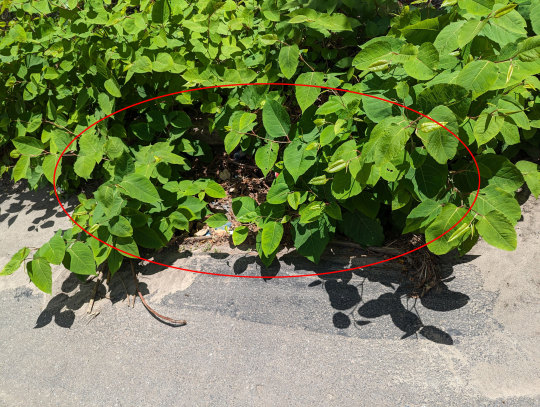

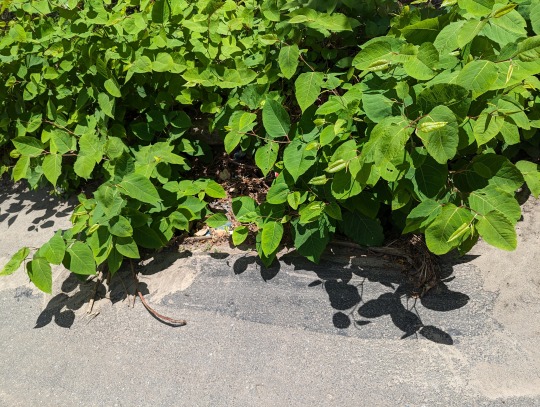

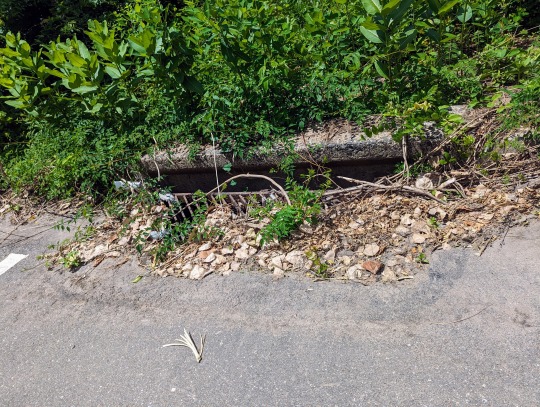
Clogged Storm Drain Inlet - Mario Lanza Blvd. (between 81st and 8400 Mario Lanza Blvd.)
I reported on June 10, 2024 to Philly311 a clogged storm drain inlets on Mario Lanza Blvd., located between 81st Street and 8400 Mario Lanza Blvd. While the area is wooded and lacks a physical mailing address, it can be identified by its position along the boulevard.
During a recent walk through the area, I observed that approximately four inlets were covered with debris. One inlet, in particular, appeared to be completely obstructed by debris and branches from nearby bushes.
Clogged storm drains can impede proper water flow and increase the risk of flooding during heavy rain events. I kindly request that city crews schedule a cleaning for this specific inlet and potentially assess the condition of the other impacted inlets along that stretch of Mario Lanza Blvd.
#philadelphia#philly311#philly 311#eastwick philadelphia#eastwick community#southwest philadelphia#the city of philadelphia#philly#southwest philly#philadelphia streets department#Storm Drain Inlet#Clogged Storm Drain Inlet#clearview#The Water Department in Philadelphia
0 notes
Text
Welcome to Infrastructure Week, Biden edition.
For the 4 years of the Trump Presidency it felt like every other week was gonna be "Infrastructure Week" but some piece of chaos derailed the Trump White House's plans.
well Yesterday, May 13th 2024, The Biden Administration declared this week Infrastructure Week to highlight ALL the major work they've done in the last 3 years.
Under the 2021 Bipartisan Infrastructure Law $454 billion in funding has gone to over 56,000 specific projects across all 50 states, the territories, DC, and tribal communities.
The White House launched a Map of all the projects you can look at

The Bipartisan Infrastructure Law is part of President Biden's wider Investing in America agenda, and together with the Inflation Reduction Act, the CHIPS and Science Act, the American Rescue Plan, all passed by Biden and Democrats in Congress has brought $866 billion dollars in private sector manufacturing and clean energy investments.
They released a State by State factsheet to show projects in all 50 states, all the territories and DC
Roads & Bridges: The Biden Administration has launched improvements on 257,000 miles of roads, and repaired 13,000 bridges. This $300 billion investment in our roads and bridges is the biggest since President Eisenhower’s interstate highway system in the 1950s. The Administration has given special attention to addressing historic injustice in our infrastructure. Many minority communities have been divided by highway bypass projects from the 1940s forward, such as the Sweet Auburn neighborhood of Atlanta Georgia. The Biden-Harris Administration is now helping reconnect divided communities and righting historic wrongs. The Department of Transportation put out a video highlighting the story of Philadelphia's Chinatown, how being split in half and have a multilane highway in the middle of their community effects them, and how the Stitch project will positively impact the people who live there who have fought for years for such relief.
youtube
Rail: The Biden Administration has invested $66 billion for rail, the largest investment in passenger rail since the inception of Amtrak. The President recently announced $16.4 billion for 25 passenger rail projects on the Northeast Corridor. This will improve service for riders from Boston to Washington DC. President Biden has also announced $8.2 billion in new funding for 10 major high speed passenger rail projects across the country. These include a high speed rail project to connect Los Angeles with Las Vegas, which broke ground April 22nd. Planned to be finished in 2028 in time for the LA Olympics, the train will take 2 hours to get from Rancho Cucamonga, California to downtown Las Vegas making it the fastest way between the two cities.

Transit and School Buses: The Administration has invested $90 billion in public transit, the largest in American history. To date the DoT has helped replace 3,000 public buses with low or zero emission buses while the EPA has replaced 5,000 school buses with clean buses.
Electric Vehicle Charging, EV Batteries & Critical Materials: The Biden Administration is the first to directly invest in electric vehicle charging. the number of publicly available charging ports on America’s roads has surpassed 182,000, over a 90% increase since President Biden took office. The President has also invested in domestic manufacturing of batteries, already five manufacturing plants have broken ground.
Clean Water: The President invested over $50 billion government-wide for the largest upgrade to the nation’s water infrastructure in history. This funding places us on a path to meet the President’s commitment to replace every toxic lead pipe in America and works to close the wastewater gap for 2 million people who lack basic sanitation. These funds have already financed over 1,400 drinking water and wastewater projects across the country, including over 800 projects that will deliver clean water for Tribal communities that lack basic water services. To date, the Administration has deployed funding that will help replace up to 1.7 million toxic lead pipes.
High-Speed Internet: The Bipartisan Infrastructure Law invests $65 billion to help ensure that everyone in America has access to affordable, reliable high-speed internet—regardless of their income, race, or zip code. Over the last year, all 56 states and territories have developed their plans for how they will spend more than $40 billion in funding to connect every unserved location within their borders. That funding comes atop $1 billion for middle-mile infrastructure, which will build more than 12,000 miles of fiber across 370 counties. These projects, will connect 10,500 people, 1,600 farms, and 295 businesses directly to fiber networks. The Department of Commerce has also awarded 148 Tribal Broadband Connectivity Program (TBCP) grants, serving over 280 Tribal Governments, which will connect more than 65,000 Tribal households, subsidizing thousands of devices, and funding digital inclusion activities for Tribal communities.
Deploying Clean Energy: The Bipartisan Infrastructure Law includes more than $62 billion in funding at the Department of Energy to advance our clean energy future by investing in clean energy demonstration and deployment projects, developing new technologies, and modernizing our power grid. This includes an investment of over $20 billion to upgrade the nation’s grid—a critical component to achieve President Biden’s goal of delivering a 100% carbon-pollution free power sector by 2035.
Legacy Pollution: Thanks to funding in the The Bipartisan Infrastructure Law the EPA has been able to cap 8,000 orphaned oil and gas wells, with tens of thousands more to be plugged in the years to come. Over 100 Superfund sites have also been cleaned up or started with funds from the Law as well.
And More!
#Thanks Biden#Joe Biden#pete buttigieg#trans positivity#public transport#green Energy#climate change#racism#clean water#tribal rights
261 notes
·
View notes
Text

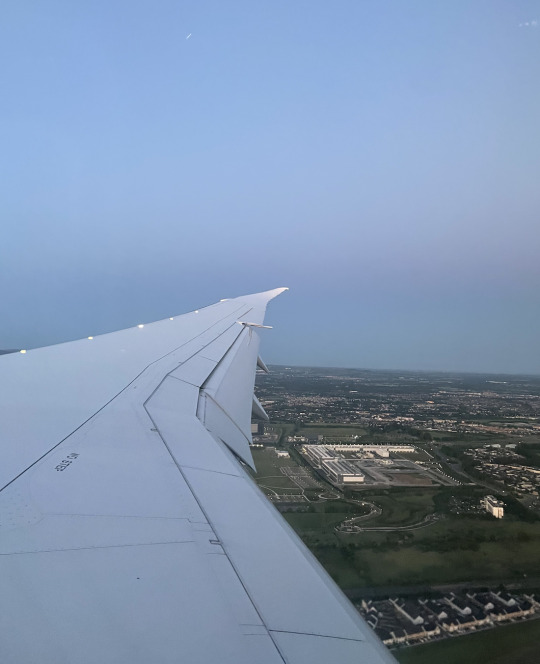






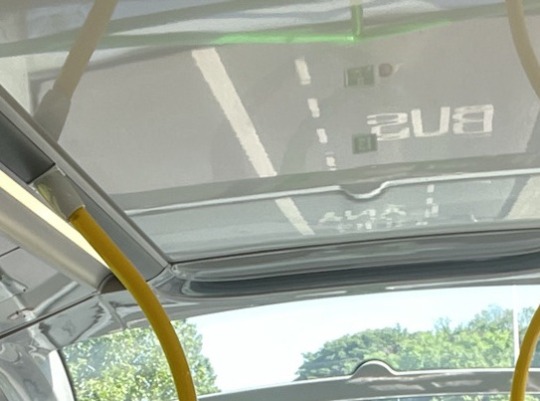




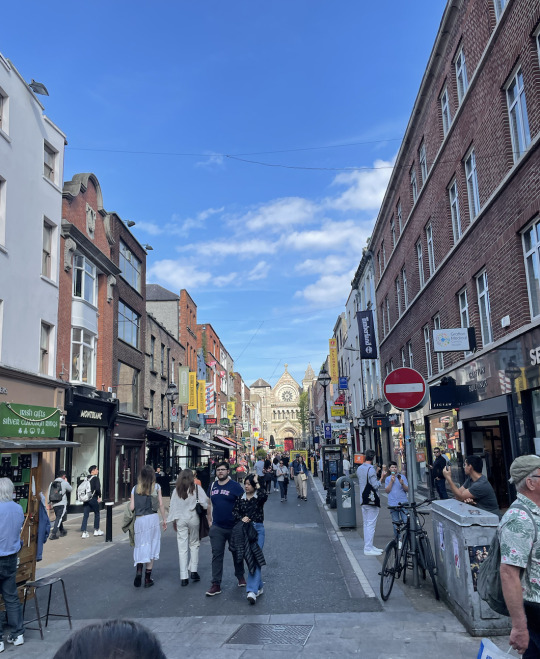

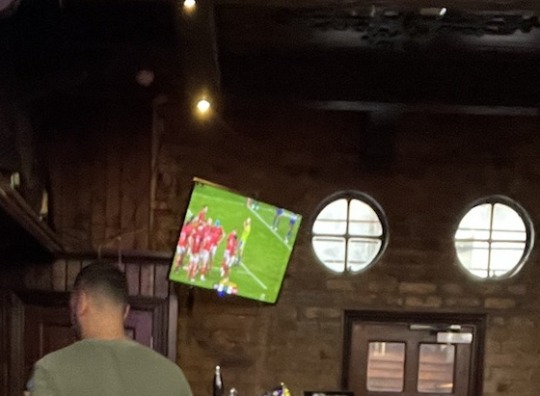

May 25th - 27th
Hi! Welcome to my blog! I am so excited to share what I have been up to in Ireland. I will format this page by sharing what I have had the opportunity to experience every day and then telling you which picture correlates with the story. I will be posting every few days or so for the next month!
My journey started on May 25th when I finally finished packing for this trip. It was a long process to figure out what I wanted to bring and what I could buy while abroad. I watched a few YouTube videos on others who have taken a similar trip. I decided to bring things like shampoo, conditioner, lotion, and medicine because they have different brands in Ireland. I also checked the weather and made sure to bring an umbrella, raincoat and a few jackets. Because of this, my bag was a little heavy and I had to move things around to my carry-on, making this process longer than I anticipated. In total, I brought a very full checked bag (50lbs exactly), a half-empty backpack, and a half-empty duffle bag. We were advised to leave some room in our luggage to fill with souvenirs or clothes!
My flight was scheduled to depart at 7:30 a.m. on May 26th, so I had to wake up around 4 a.m. with just 3 hours of sleep behind me. for the airport since we live about an hour away. The check-in process at the airport counter wasn’t too long. I made sure to pack my important papers (passport and IDs) where I could easily access them. I was lucky enough to have my mom and boyfriend drop me off at security and say goodbye. That helped ease the anxiety I was feeling a little. Goodbyes are bittersweet even if temporary. I finished up the Clear Security process and ventured through security where I met another girl going on the trip. We all wore NAU T-shirts to ensure we could find each other easily, and it was so worth it! We met up with our teacher and the majority of our group at the gate. Some girls decided to fly in later from other destinations. We eventually boarded the first leg of the flight and were on our way to Philadelphia (picture 1). We then had a three-hour layover before flying to Dublin. During my layover, I got food, talked more with my peers on the trip, and called my friends and family. We then began our final leg into Dublin (picture 2). I mostly slept on the plane, but when I wasn't, I was watching movies I had downloaded or colored in a book I had brought. I was too tired to read.
Once we landed, it was 5:30 a.m. on May 27th, Dublin time. We immediately proceeded to customs to get our passports stamped (picture 3) and had to wait a very long time afterwards in baggage claim. We then waited with our bags for another hour to meet two other girls who had later flights. Later, we hopped on a bus to our destination for the next month, University College Dublin! It was about 9 a.m. once we got checked in and got to our rooms. A long two days indeed. We have a kitchen (picture 4), a lounge (picture 5), and a combination of the two at the ends of long hallways (picture 6). In the middle of those are our individual living quarters (picture 7 & 8). The rooms are very nice even if they are a tad small but suitable for one person. The bathroom, however, is a little scary. It has a shower with no walls around it. It is very easy to flood the floor of your bathroom. The first thing I did when I got into my room was unpack and hang up my clothes. Hangers were not provided, but I had purchased travel hangers in advance. Afterwards, I showered and took a nap until about 3 p.m. We decided as a group to meet for dinner and explore Dublin. We also wanted to stop at a connivence store to buy things like hand soap, trash bags, water and snacks. We took the bus on campus (picture 9) into Dublin City Center. From there, we walked through a beautiful park that had the cutest dogs everywhere (picture 10, 11, & 12). Many people were soaking in the sun because it was a very warm day! We continued walking through the city past many cool buildings with gorgeous architecture (picture 13, 14, & 15). We settled on a pub nearby once we got tired of walking in the heat (picture 16). After dinner, we ventured over to the connivence store. It was so surprising the differences in prices here versus America. For instance, a 2 liter of water here was $.89 Euros and I ended up only spending 20 Euros for all of my groceries and paper goods! We then took a bus back to campus and made it just in time to watch the sun set (picture 17)!
I am so excited to be here! It is so beautiful here and Dublin has the most welcoming aura. It feels welcoming and open, and it is one of the main reasons I chose Dublin. I have heard stories about how people fall in love with this city, and I understand them now! I cannot wait to explore more over the next few weeks. I am also looking forward to seeing more of the countryside and looking for that four leaf clover.
Thank you again for reading! I am so excited to share what's next on my trip!
14 notes
·
View notes
Text
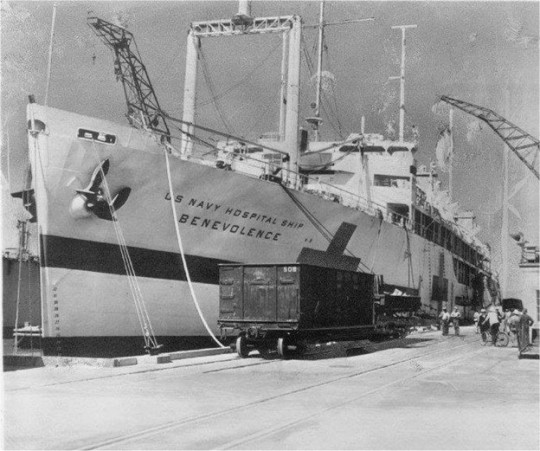
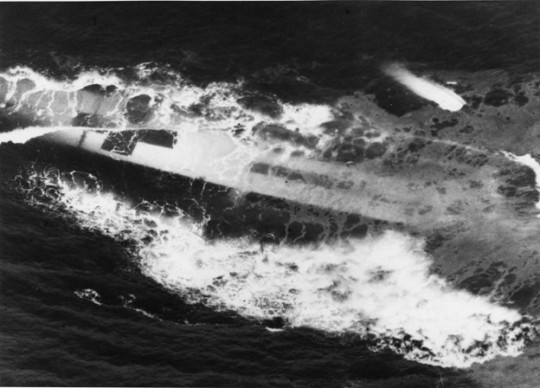
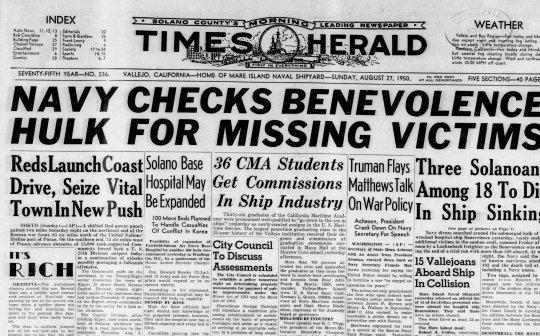
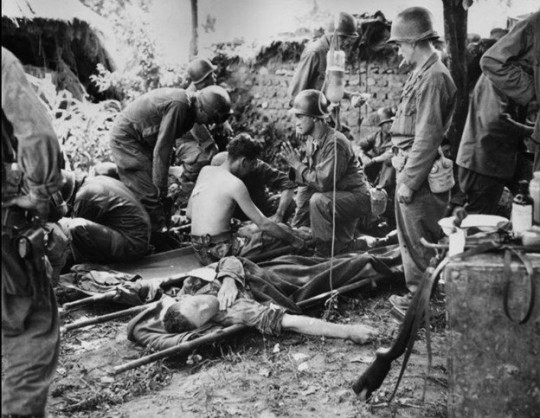
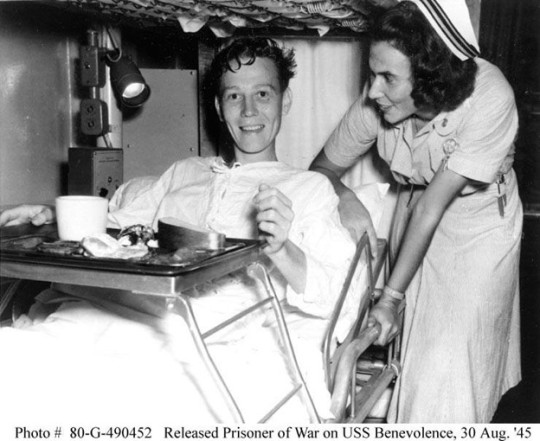

Life and Death at the Gate
At dawn on Sunday, 25 June 1950, the North Korean army crossed the 38th parallel supported by massed artillery fire. With the support of the Soviet Union the invasion was based on a false claim by North Korea that South Korean troops had attacked first. The real aim of the invasion was to take by force and subjugate South Korea under rule of the current North Korean leader's grandfather and his sham democracy. Condemned by the Free World, the invasion drew the first ever response by the United Nations, primarily supported by U.S. troops and aid. The war has technically never ended, and it resulted in millions killed and over 100,000 U.S. servicemen wounded or killed in action. In recognition of the coming carnage, a short time after the invasion, the World War II era hospital ship USS Benevolence (AH-13) was towed from a mothball fleet to Mare Island Naval Shipyard (MINS) in the San Francisco Bay Area to be taken out of mothballs and recommissioned. The US Navy Hospital Ship Benevolence would never make it to Korea. She tragically sank just minutes outside the Golden Gate while returning from sea trials.
Benevolence departed Mare Island at 0800 on 25 August 1950 for limited sea trials following recommissioning. Eight and a half hours later the fully loaded freighter SS Mary Luckenbac passed under the Golden Gate Bridge in thick fog bound for Philadelphia, Pennsylvania. Visibility was reported to vary from 300 to 400 yards. Radar had become common place by the 1950’s, but the Mary Luckenbac‘s radar had malfunctioned and was turned off. As the Mary Luckenbac passed under the bridge, she was on a collision course with the Benevolence returning from her sea trials. Aboard the Benevolence the radar was on and operating, but for some reason the crew was unaware of the approaching freighter. Both ships had bow lookouts posted and were operating their fog horns, but their combined closing speeds of 27 knots would doom the Benevolence. At an estimated 1,000 yards bow lookouts on the Benevolence sighted the bow wave of the approaching freighter. Benevolence began blasting the emergency signal on the ship’s horn as both ships attempted evasive action. It was too late, within three minutes the freighter slammed into the hospital ship raking her compartments open along the port side.
Following the collision both ships vanished into the fog. Unaware of the extent of the damage to his ship, Captain Barton E· Bacon on board the Benevolence gave no orders to prepare to abandon ship. However, within 5 minutes his ship’s main deck had sunk to sea level at the bow and she was listing 45 degrees, too far over to launch the lifeboats. The Benevolence had managed to transmit a message requesting emergency assistance just after the collision and then radio contact was lost. Twenty minutes later the Benevolence rolled over and sank in the shipping channel between Pt. Bonita and Seal Rocks. Five Hundred and twenty-five men and women went into the frigid water as the outgoing tide scattered them further out to sea. As word of the disaster spread a small armada of fishing boats, yachts, coast guard and naval vessels began scouring the seas in the thick fog looking for survivors. Survivors would continue to be found and pulled from the sea for nearly two days and as they were landed by rescue ships the Red Cross handed them a carton of cigarettes and the Service’s gave them booze. In the end eleven Navy, ten Military Sea Transportation Service and two MINS tradesmen were lost.
The Benevolence laid just beneath the waves in the south shipping channel as a hazard to navigation for sixteen months as separate courts of inquiry were held by the Navy and Coast Guard on Treasure Island and in San Francisco respectively. While the inquiries were underway MINS was directed to study the possibility of salvage. A no cure no pay request for proposals was sent to Bay Area salvage firms to evaluate the feasibility of salvage. A tanker suffered a minor collision with the Benevolence hulk, before MINS officials determined that salvage was not feasible, and the decision was made to remove the hazard with explosives. When you visit the USS San Francisco memorial near Lands’ End on the 49 Mile Scenic Drive and look out to sea you are overlooking the site of the Benevolence sinking.
Dennis Kelly
#mare island#naval history#san francisco bay#us navy#vallejo#Korean War#Mary Luckenbac#Benevolence#Hospital Ship#Golden Gate#sink#collision#fog#survivor#drown
2 notes
·
View notes
Text
Checking in with SCOTT CAAN
The Daily Courier
6 Jan 2023
BY GEORGE DICKIE
In playing a Philadelphia police officer who is reunited with his missing son after seven years, Scott Caan found himself in unfamiliar waters. As a matter of fact, the character’s unique quandary makes it one that he’s sure no actor has ever played.
In “Alert: Missing Persons Unit,” an hourlong procedural drama that premieres Sunday, Jan. 8, on Fox (before taking its regular Monday time slot the following night), Caan (“Hawaii Five-0”) stars as Jason Grant, a Philly cop who is a member of the department’s Missing Persons Unit, who is reunited with his son Keith (Graham Verchere, “Stargirl”) years after the boy disappeared.
So while Jason and his ex-wife and fellow cop Nikki (Dania Ramirez, “Maids”) are overjoyed to have their boy back, they can’t help but notice things about the teen that don’t seem right and tell them he may not be their child. Which, Caan says, presented him with what he calls an “acting problem.”
“This idea of Dania and my character are trying to figure out if this kid is our son or not is really something that’s kind of unprecedented,” he explains. “You know, it’s not something you can go research, it’s (not) something you can talk to somebody who’s experienced . ... It’s something that you really have to figure out and dig into and it’s a complicated idea to try to figure out if this kid is our kid or not.”
“I read (the script) and I was like, ‘S..., I don’t know what I would do in these situations. I don’t know how I would act.’ ”
But while the role at times left him at a loss, Caan is thankful he had a very easy rapport from day one with his scene partner Ramirez.
“I don’t want to be too pretentious and talk about acting,” the son of “The Godfather” actor James Caan says, “(but she) brings a certain sensitivity out of me that I haven’t really been able to touch before . ... I think she’s great.”
Full name: Scott Andrew Caan
Birth date: Aug. 23, 1976
Birthplace: Los Angeles
Family ties: He and partner Kacy Byxbee have an 8-year-old daughter, Josie; is the son of actors James Caan and Sheila Ryan
TV credits include: “Entourage,” “NCIS: Los Angeles,” “Vice Principals”
Movie credits include: “A Boy Called Hate” (1995), “Enemy of the State” (1998), “Varsity Blues” (1999), “Boiler Room” (2000), “Ocean’s Eleven” (2001), “Ocean’s Twelve” (2005), “Friends With Money” (2006), “Ocean’s Thirteen” (2007), “Meet Dave” (2008), “A Beginner’s Guide to Endings” (2010), “Rock the Kasbah” (2015)
Did you know: In the 1990s, was a member of the hip-hop group The Whooliganz under the pseudonym Mad Skillz; has a black belt in Brazilian jiu-jitsu
Favorite book: “There’s a book called ‘Rule of the Bone’ that was always one of my favorite books. I’m a big (Charles) Bukowski guy. ‘Women’ was one of my favorite books.”
Favorite movie: “I’d say my all-time favorites would probably be maybe ‘Raging Bull,’ any Hal Ashby movie, ‘Thief.’ ‘Buffalo ‘66’ is definitely one of my favorite movies. There’s a movie called ‘The Two of Us,’ this Claude Berri movie, a French movie ... . I used to be kind of a movie nerd. I’m not as much now but I could list off 10, 20, 30 of my favorite movies.”
Favorite musical artists: “I would say A Tribe Called Quest, Gang Starr, the Smiths and Joy Division.”
14 notes
·
View notes